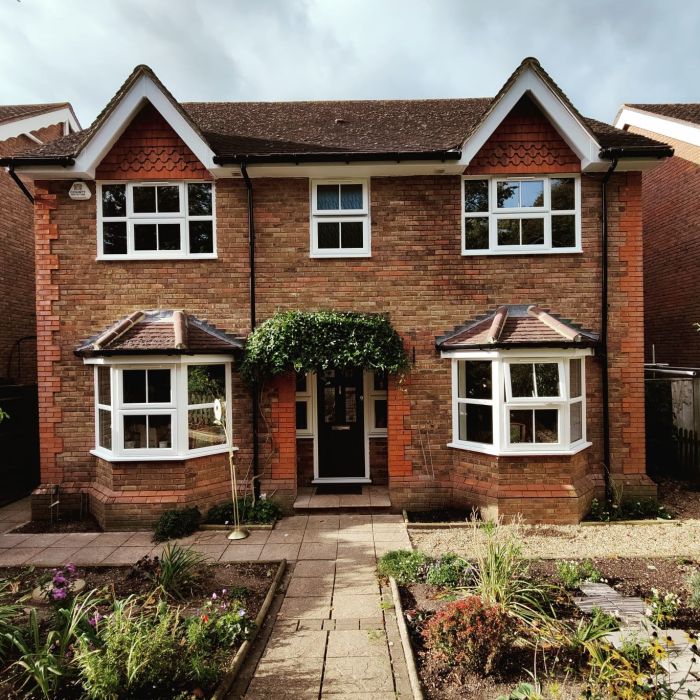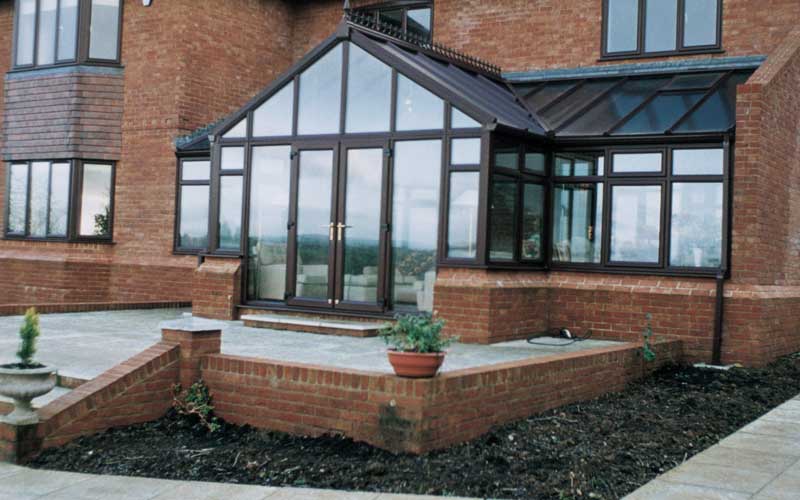
The decision to add a brand new conservatory to your home is always an important one. Depending on your specific type of home and the intentions you wish to use it for, can make or break which conservatory style you should end up opting for. Thankfully, here at Albion Windows we have over 35 years of industry experience helping homes enjoy all of the benefits a high-performance conservatory extension can bring.
Whether you currently reside in a family home and are craving some extra space for the children or simply like the thought of having your own area in which you can relax during those summer evenings, we’ve put together this buyer’s guide to answer almost any query you have when considering a new conservatory from Albion. With so many designs and configurable options to choose from, expanding your home has never been easier!
What to look for in a new conservatory
Much like each individual property itself, every homeowners’ needs are different. When researching what a conservatory should do to enhance your home, the following points are a good starting point with features to look out for:

- A unit specifically made to measure and designed for your home
- Constructed from materials that are easy to clean and low maintenance
- Structurally secure design with strong frames that will last a lifetime
- Aesthetically in-keeping with your existing style of home
- Great for energy efficiency (Low U-values to help reduce consumption)
- Maintains an inviting and comfortable temperature 365 days a year
- Allows for a generous amount of light entry
- Fully weatherproof to resist the harshest of elements
Many styles for multiple applications
Compared to when conservatories first became a runaway hit amongst British homeowners way back in the 1980’s, plenty more impressive designs have Since ventured into the market. Ranging from traditional Victorian styles that boast a steeply pitched roof to more economical designs such as the lean-to conservatory, ideal for those lacking large outside space – discover more about all the different styles below:
Victorian
Undoubtedly the most popular choice of conservatory style in the UK, Victorian conservatories while traditional have since proved themselves to be wildly versatile, easily tying in with both period and contemporary homes alike. Victorian conservatories make use of a three-facet design, sporting a bay front that features three main windows all at wide angles.
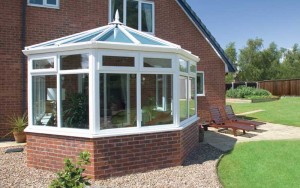
Georgian
Sharing certain similarities with their Edwardian cousin, Georgian conservatories are less ornate than the Victorian style but boast a rectangular design which ensures that any homeowner can make the most of the available floor space. The very grand styles contributes nicely to both traditional and modern homes
Lean-To
Making great use of limited space by making use of various flat pane sides and a simple angled roof design, Lean-to conservatories unsurprisingly “lean” towards the side of your property to bring a taste of the Mediterranean. Unlike most other styles, the lean-to design is relatively swift to install, saving time, labour and money all at the same time.
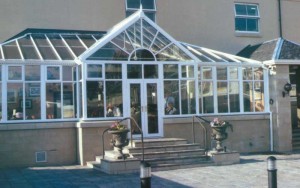
Combination
A successful amalgamation of various conservatory styles, opting for a combination conservatory for your London home means you’ll be able to enjoy multiple rooms within one structure. Both P-shape and T-shape conservatory styles are extremely versatile and roomy, providing you have enough outside space.
Gable
Gable conservatories typically offer homeowners a stylish front elevation which better helps to introduce a large influx of natural light, offer a grandeur that is perfect for traditional and contemporary homes all at the same time. Its rectangular shape means space is never an issue, allowing homeowners to treat their conservatory area as they would any other room.
Conservatory features to keep in mind
Affordability
Price for a new conservatory can range anywhere between £10,000 and £100,000, being largely dependent on your choice of installer, materials and style. Conservatories of any style erected using highly durable and insulating uPVC is undeniably the most cost-effective choice, whilst those constructed in aluminium will be able to provide wider views thanks to higher strength.
uPVC also represents a very sound financial investment, considering it will never warp, rot or discolour thanks to modern developments made to manufacturing. They can even add value to the home, if ever you would consider moving properties in the near future. Always discuss costing with your chosen installer to keep things clear.
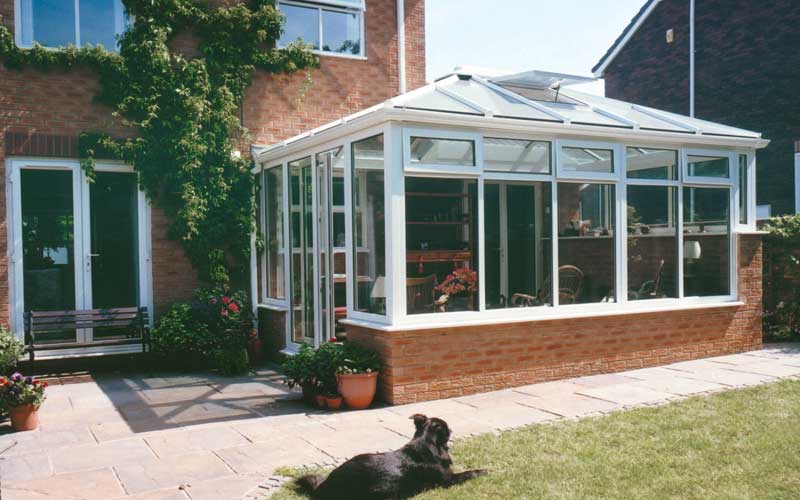
Colour options
In whichever material you select for your new conservatory, there’s always plenty of opportunity to get creative in terms of the selection of colour options on offer. Especially key for homeowners worried about making the new addition a natural part of the home, shades and tones range from vibrantly distinctive Chartwell Green and Bright Whites to woodgrain styles such as Eternal Oak and Vintage Rosewood.
Energy efficiency
When using energy efficient additional glazing techniques, conservatories are suitable for use 365 days a year instead of simply the spring or summer seasons. Additional elements such as tinted glass can be added for potential solar control with increased privacy, as well as underfloor heating ensuring you never get cold feet during the winter months. Once heat is able to more effectively be locked into the living environment, it’s even possible to reduce your home’s energy bills.
Conservatories can incorporate sealed glass units that use low-e glass and argon gas to keep it at a consistent, comfortable temperature throughout the seasons. If you already have a conservatory but find it unusable in the summer and winter months, it’s even possible to upgrade the roof of an existing extension to further adjust temperature levels.
Light entry
When it comes to flooding your new living environment with plenty of natural light, there’s no conservatory style that fails. Whether Victorian, combination, lean-to or Gable-ended, light transmission into the home is always a guarantee through the conservatory’s surrounding glazing. You and your family will benefit greatly from this much lighter and brighter atmosphere, obtainable with both glazed and solid roof styles.
Security
When opting for any kind of new extended living space, it’s important to ensure that your home’s security is never threatened or at risk of being reduced. Thankfully, almost any style of conservatory can incorporate the multiple forms of furniture and security features often found in most windows and doors, – ensuring that when using your new conservatory, all homeowners always feel safe, relaxed and comfortable.
While orangeries are traditionally more secure than your average conservatory style thanks to their natural integration of a solid brickwork foundation, the security of your new conservatory will be directly determined by your choice of windows and doors.
Providing that the French, sliding or bi-fold doors fitted within the structure correctly make use of additional glazing, internal beading and multi-point locking, your new extension will be just as protected as the rest of your home. Around 15% of burglaries don’t involve any kind of forced entry, so it’s important to remember to keep doors and windows locked.
Will you need planning permission?
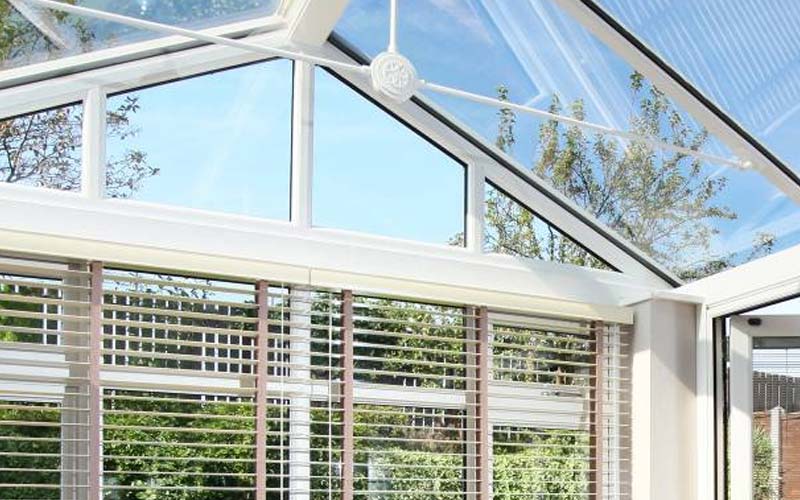
More often and not, choosing to add a new conservatory to your house will not need planning permission on behalf of the council, providing it abides by certain rules. Rather than a full-scale extension, conservatories are often regarded as a ‘permitted development right’ and so acquiring planning permission is not always necessary.
Whether or not your conservatory will need planning permission depends entirely on your project specification, and unsurprisingly each project is individual and different. For this reason it’s always recommended that you research and discuss your plans thoroughly with your chosen installer, but as a few general guidelines, you should not require it as long as:
- Your home cannot already have been extended
- The conservatory must not exceed over half of the length of your garden
- Side extensions cannot extend past half of the width of your house
- The new conservatory’s roof ridge must no higher than the eaves of your property roof
- A maximum height of 4 metres, but 3 metres high if within 2 metres of boundary
Enjoy additional space and light for your home with Albion Windows
Serving all London homes for over 35 years at Albion Windows we pride ourselves on being industry experts within the conservatory installation industry. A family-run business based in Croydon, we provide unrivalled customer service, guiding you through every step of the home improvement process.
Any conservatory supplied by Albion Windows means you always receive a high-quality product that is fully customisable to suit the character and personality of your home or property. Never compromising on product performance or aesthetics, we guarantee to have a conservatory style to meet your specific requirements somewhere within our wide range of designs.





